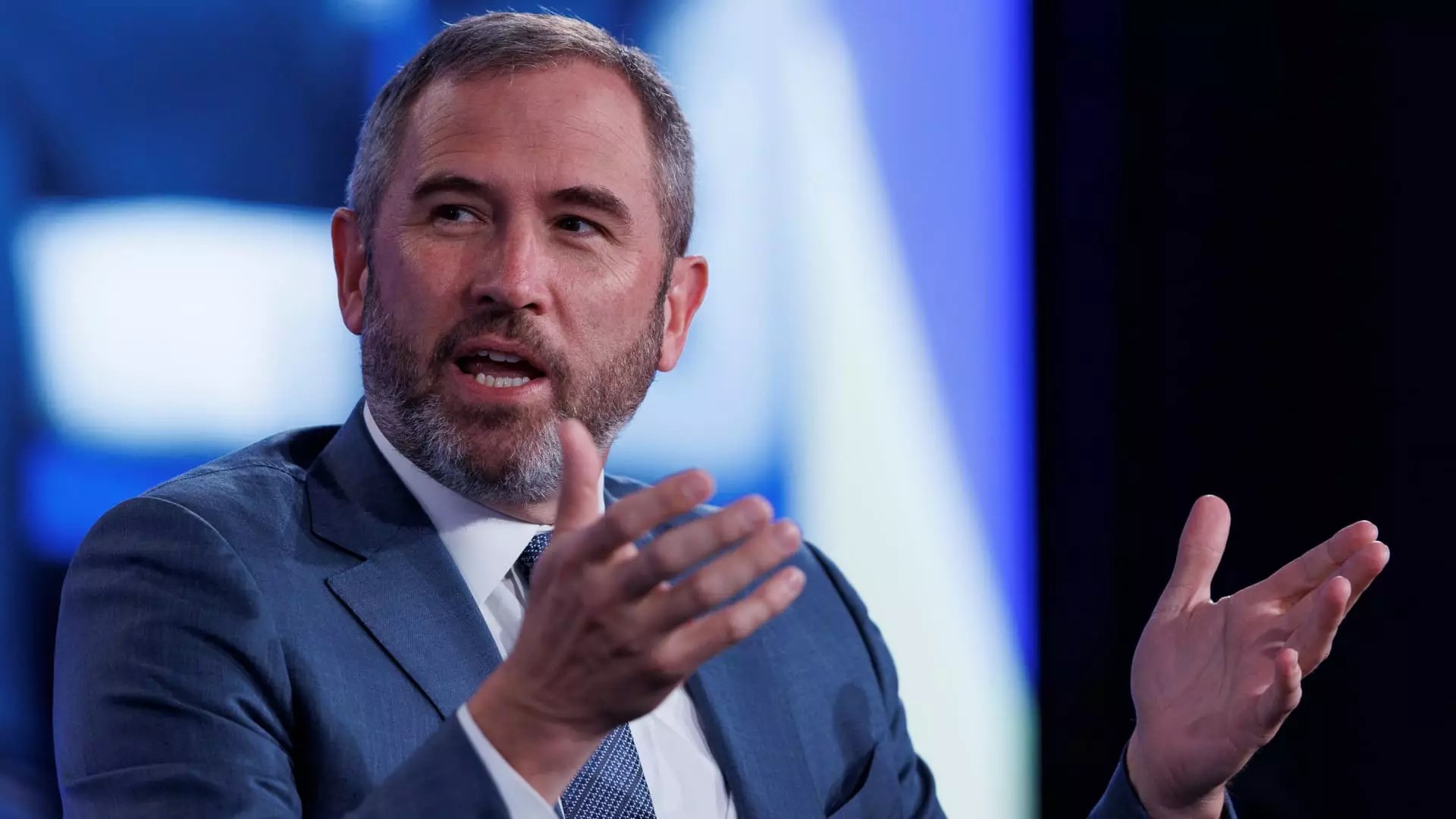In the evolving landscape of cryptocurrency, the political environment significantly impacts the regulatory framework that governs this innovative sector. Ripple Labs’ CEO Brad Garlinghouse recently articulated his ambivalence regarding the direction of crypto regulation in the United States, while expressing optimism in light of the upcoming elections. His insights come at a pivotal moment for the crypto industry, as stakeholders grapple with regulatory scrutiny and shifting political priorities. With intricate socio-political dynamics at play, Garlinghouse maintains that regardless of the electoral outcome, a more favorable and innovation-supportive Congress is on the horizon.
Garlinghouse’s optimism stems from a belief that the current political landscape may pave the way for more pro-crypto legislation and governance. He suggests that the election will be a defining moment for the crypto community, hinting that a shift towards a Congress willing to embrace innovation could infuse fresh energy into the sector. This sentiment is particularly notable against the backdrop of Ripple’s experience with regulatory challenges, including a lawsuit from the U.S. Securities and Exchange Commission (SEC) that has cast a shadow over its operations.
Ripple’s journey, characterized by significant legal battles and varying degrees of acceptance in the market, serves as a case study for the broader cryptocurrency community. In 2020, Ripple faced considerable regulatory scrutiny, but a recent ruling affirmed that the XRP token cannot be classified as a security when sold to retail investors. This legal victory not only bolstered Ripple’s standing but also contributed to a burgeoning sense of resilience within the industry, suggesting that despite regulatory obstacles, innovative financial solutions are destined to flourish.
Garlinghouse emphasized that approximately 95% of Ripple’s business occurs outside the United States, a fact he attributes to the contentious regulatory atmosphere in Washington, D.C. As he advised fintech startups, incorporating outside the U.S. may offer a viable path forward in an environment where regulatory clarity remains elusive. His candid admission of the need to adapt to changing circumstances showcases an agile approach that many crypto startups might consider emulating.
The increasing partisanship surrounding crypto regulation is another layer complicating the narrative. Garlinghouse acknowledged this divide, alluding to contrasting views within political campaigns that influence the regulatory landscape. Although some candidates, such as Donald Trump, have positioned themselves as champions of crypto, others, like Vice President Kamala Harris, adopt a more nuanced approach—a contrast that elicits mixed feelings among pro-crypto voters.
As Garlinghouse noted, the Biden administration’s perceived hostility toward crypto appears to drive a wedge within the industry, with many stakeholders feeling that the regulatory environment has been antagonistic. The term “Operation Chokepoint 2.0” illustrates the concern that federal intervention might make traditional banking relationships with crypto entities more difficult. This sentiment resonates with many in the crypto sector who believe that the existing administration’s approaches detract from the growth potential of this emergent technology.
Looking ahead, Garlinghouse remains steadfast in his belief that the industry will ultimately prevail through these regulatory challenges. He strongly asserts that the crypto sector is resilient and will adapt to whatever political winds arise. Despite the complexity of the current climate, he expresses confidence that there will be a resurgence of progress, which aligns with the sentiment that markets, innovation, and society will ultimately push for favorable outcomes.
As he prepares to endorse candidates such as John Deaton—who is challenging entrenched figures critical of crypto—Garlinghouse illustrates the proactive stance many in the sector are taking. His advocacy for greater representation and understanding within the political framework signifies an evolving tone within the crypto community, demanding clarity and cooperation from regulators while highlighting the potential benefits of blockchain technology and cryptocurrency.
While uncertainty pervades the current crypto regulatory landscape, leaders like Garlinghouse inspire a collective resilience that signals hope for a more cooperative future. The emphasis on engaging with political processes, advocating for pro-innovation policies, and the potential for bipartisan support emerges as critical themes that could define the next phase of cryptocurrency regulation. As the political tides shift, the onus will be on both industry leaders and lawmakers to foster an environment conducive to growth, ensuring that the promises of blockchain technology are not lost in the tumult of regulatory apprehensions.

